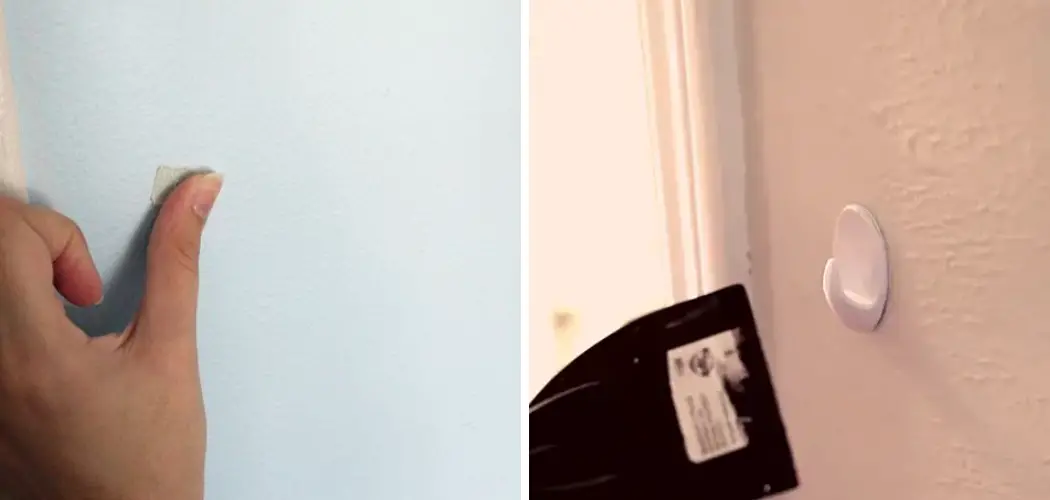Adhesive can be an extremely difficult thing to remove from your walls. Not only is it incredibly sticky and hard to get off, but it can also pull paint off with it if you don’t exercise caution. Fortunately, you can take steps to make removing adhesive much easier while ensuring that your paint stays intact.
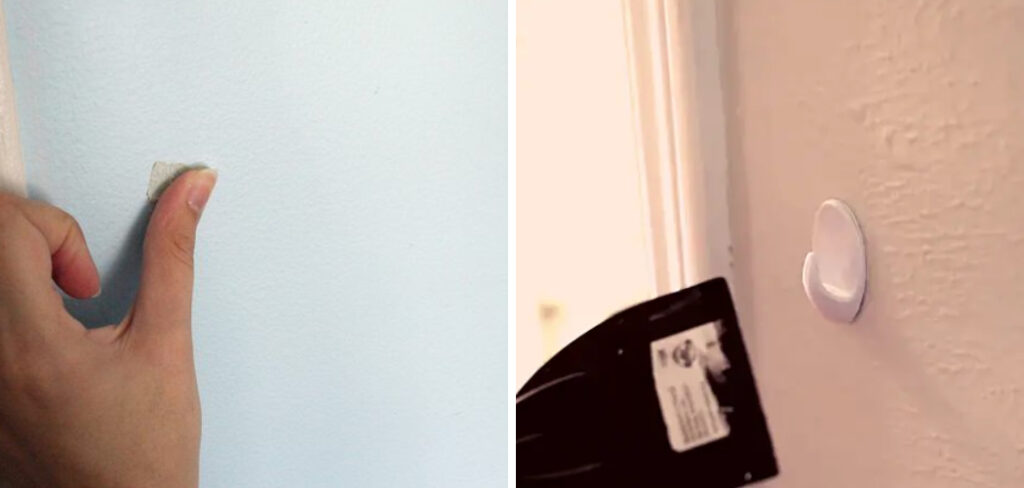
By following a few simple steps, you can quickly and easily remove all of the adhesives without damaging your walls or paint.
The advantage of removing adhesive from a wall without removing paint is that you can avoid potential damage to the wall caused by scraping off the adhesive. This method lets you leave the underlying paint intact, preserving its original color and finish. It also helps reduce mess since it doesn’t require any abrasive scrubbing or chipping away at the adhesive. You can find step-by-step instructions on how to remove adhesive from wall without removing paint in this blog article.
Materials You Will Need
- Paint scraper
- Plastic putty knife
- Heat gun
- Razor blade
- Denatured alcohol
- Masking tape
- WD-40 lubricant or another petroleum jelly
- Paint thinner
- Soft clothes (terry towels)
- Lint-free clothes like cheesecloth (to prevent lint from sticking to the wall)
Step-by-step Instructions for How to Remove Adhesive From Wall Without Removing Paint
Step 1: Inspect the Area
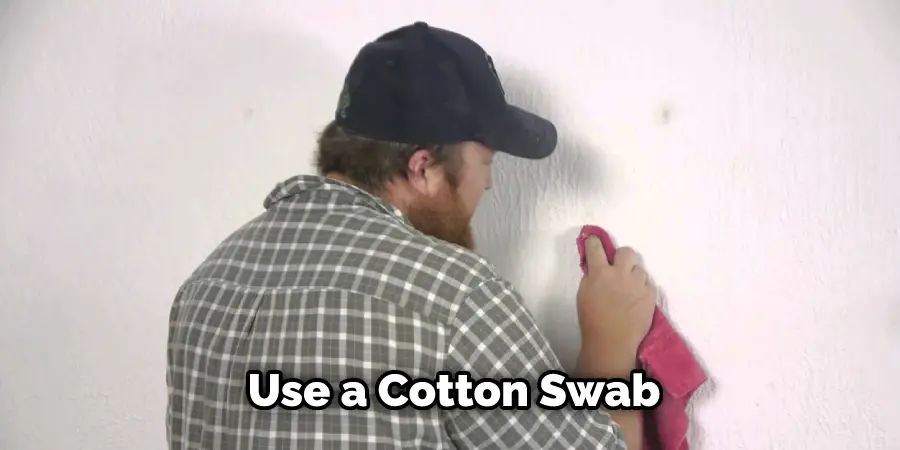
Examine the area carefully to assess the size and scope of the adhesive. This will help you decide which cleaning method might be best for removing it from your wall. It is important to test a small patch of the wall before attempting any adhesive removal procedures. Use a cotton swab or pad dampened with diluted white vinegar or rubbing alcohol to test a small patch first and wait a few minutes to see if the paint, or the adhesive, is affected.
Step 2: Soften the Adhesive
If the paint is not affected, you can soften the adhesive with a product like Goo Gone or WD-40. Use a cotton swab dampened with these products to apply a small amount of it onto the adhesive area. Let the product sit for about 10 minutes to soften the adhesive.
Step 3: Scrape Away Adhesive
Using an old credit card or a plastic scraper, gently scrape away the softened adhesive from the wall. If you experience any resistance, stop and apply more of the softening product to that area to loosen it further before continuing. Take care not to press down too hard while scraping to prevent any damage to the paint.
Step 4: Clean the Wall
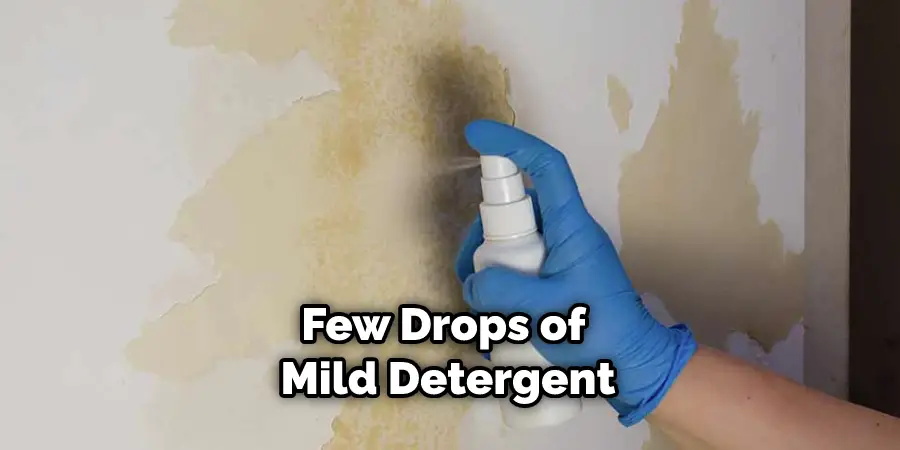
Once you have removed all of the adhesives, it is time to clean the wall. Use a soft cloth dampened with warm water and a few drops of mild detergent or liquid dish soap. Gently wipe away any remaining residue from the wall. Finally, use a dry cloth or paper towel to dry the wall. This will prevent any water damage from occurring and help keep your walls looking clean and fresh.
By following these steps, you can effectively remove adhesive from your walls without damaging the paint. With the right knowledge and a few simple tools, you can easily remove adhesive from any wall without worry.
Safety Tips for How to Remove Adhesive From Wall Without Removing Paint

- Wear personal protective equipment like gloves and goggles to protect your hands, eyes, and skin from getting injured or damaged by harsh chemicals used in the removal process.
- Ensure that you are removing adhesive in a well-ventilated area, as some of the chemicals may be toxic and can easily irritate your lungs if inhaled.
- Before starting the process of removing adhesive, test it on small sections first to check if it’s safe for use and will not damage your wall paint.
- Ensure that all electrical outlets or lamps near the surface you’re working on are unplugged and turned off – to avoid any risk of electric shock while performing the procedure.
- Heat can also be used to remove adhesive from the wall without removing paint; however, too much heat may cause damage to the wall’s surface and lead to the peeling of the paint. Therefore, use a low-level heat gun or hairdryer to ensure that the area is covered with a towel or cloth before you start.
- Soften the adhesive with a damp cloth and then use a scraper to remove it from the wall this may require several water applications and scraping for stubborn adhesives.
- After removing the adhesive, clean the area thoroughly with warm soapy water and let it dry completely before you apply a new coat of paint.
Following these safety tips can help you successfully remove adhesive from walls without removing paint – so that your walls look as good as new.
What Are Some of the Most Common Mistakes People Make When Attempting to Remove Adhesive From Walls?
- Not Using the Right Tools: When attempting to remove adhesive from walls, it is important to use the right tools to avoid damaging the paint or wall beneath. Commonly used tools such as knives and razor blades can easily scratch and gouge the wall’s surface if used improperly.
- Applying Too Much Pressure: Applying too much pressure when removing adhesive can cause it to spread and damage the wall. Instead, use a gentle circular motion with a cloth or other soft material to slowly remove the adhesive.
- Not Testing First: Before attempting to remove adhesive from walls, it is important to test on an inconspicuous area first. This will ensure that the adhesive removal method used is safe and will not damage the paint or wall beneath.
- Not Using a Reputable Product: Many products claim to be able to remove adhesive from walls without effectively damaging paint, but some of these may cause more harm than good. It is important to research and uses a reputable product specifically designed for adhesive removal before attempting to remove it from walls.
By following these tips and taking precautionary measures, homeowners can safely and effectively remove adhesive from walls without fear of damaging the paint beneath.
How Often Should You Inspect Your Walls for Any New Adhesive That May Need to Be Removed?
Adhesive can be tricky to remove, especially if it has been stuck on the wall for a while. It is important to inspect your walls regularly to catch any adhesive before it becomes too difficult to remove and may require the removal of paint. How often do you need to inspect your walls for any new adhesive that needs to be removed?
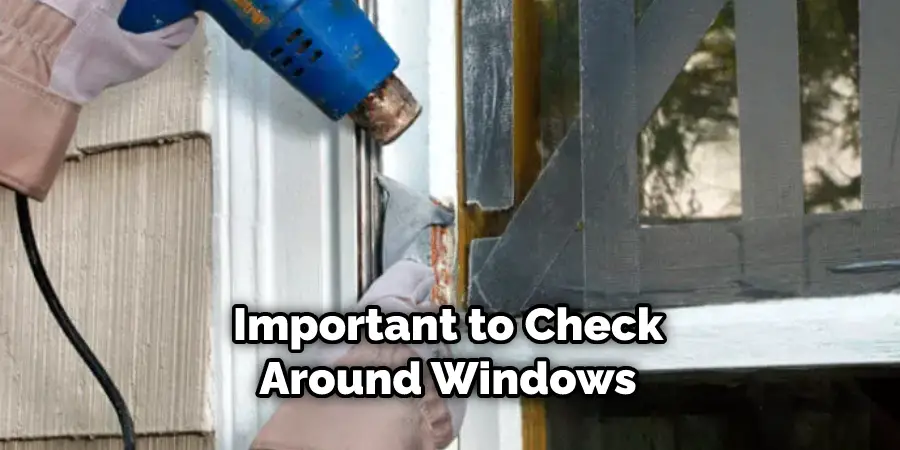
Inspecting your walls for adhesive at least once a month is best. Adhesive can build up quickly and will be harder to remove if not caught in time. It’s also important to check around windows or other openings that may allow moisture to enter, as this can increase the chance of adhesive buildup on your walls. If you spot any adhesive that needs to be removed, do it as soon as possible to prevent further damage.
How Often Should You Clean the Area Around Where the Adhesive Been Removed to Prevent Any New Adhesive Buildup?
Once the adhesive has been removed from your wall, it’s important to regularly clean and maintain the area. This will help prevent any new adhesive buildup and ensure that your walls remain residue-free.
Wiping down the area with a damp cloth effectively removes any remaining residue and keeps the surface clean. Be sure to use a mild detergent and warm water when cleaning the area, as harsh chemicals may cause damage to the paint and underlying surface.
It’s also important to vacuum and dusts the area where you removed adhesive regularly. Vacuuming can help remove any small particles of adhesive that have been left behind while dusting with a soft cloth will help keep your walls looking neat and tidy.
Finally, it’s important to inspect the area on a regular basis for any signs of new adhesive buildup. If you notice any fresh residue, it’s best to use the same cleaning method as before to remove it. By keeping up with regular maintenance and cleaning, you can ensure your walls stay free of adhesive residue and remain looking their best.
Conclusion
One of the biggest disadvantages to removing adhesive from a wall without removing the paint is that you may not be able to get all of the adhesives off. Depending on the adhesive and how long it has been on the wall, some residue might still remain after removal.
In addition, there is also a risk of damaging or discoloring the paint during the removal process. It is important to exercise caution when attempting to remove adhesive from a wall without removing the paint.
In conclusion, it is possible to remove adhesive from walls without damaging the paint. By following the above steps, you can easily and safely remove the tape, stickers, and other adhesives without worrying about repainting or replacing any part of your wall.
With a few simple tools and some patience, you can quickly peel off unwanted adhesive residue with ease. If all else fails, you can always hire a professional to do the job for you. I hope this article has been beneficial for learning how to remove adhesive from wall without removing paint. Make Sure the precautionary measures are followed chronologically.
About
Angela is the chief editor of Indoorense. She began her career as an interior designer before applying her strategic and creative passion to lifestyle and home.
She has close to 15 years of experience in creative writing and online content strategy for housekeeping and cleaning,home decorations as well as other efforts.
She loves her job and has the privilege of working with an extraordinary team. She lives with her husband, two sons, and daughter in Petersburg. When she’s not busy working she spent time with her family.

